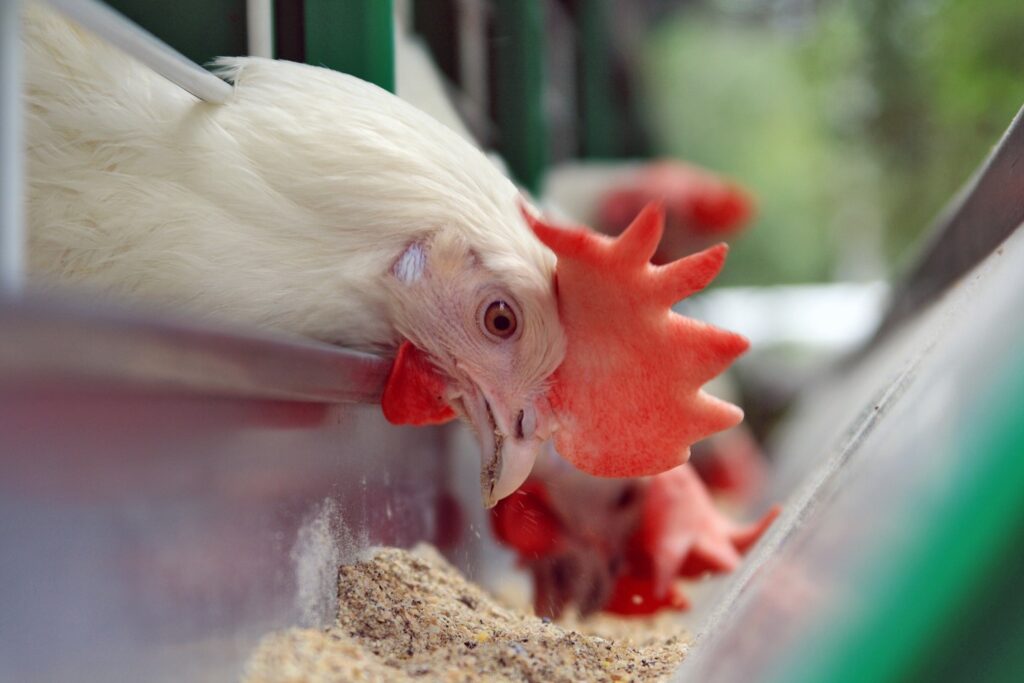
- Market Research and Planning
Understand the Market: Before starting, research the demand for poultry products in your area. Are people more likely to buy eggs, broilers (meat), or both? Analyze local consumption patterns and competition.
Business Plan: Create a detailed business plan outlining:
Types of Poultry: Will you focus on broilers (meat production), layers (egg production), or both?
Target Market: Will you sell directly to consumers, local stores, restaurants, or markets?
Budgeting: Initial investment for infrastructure, equipment, feed, and labor.
Marketing Strategy: How will you promote and sell your poultry products?
Growth Plan: Forecast expansion or diversification options as your business grows.
- Choose the Type of Poultry Farm



Broilers (Meat Production): Broilers are raised for meat production. They have a fast growth rate and are typically slaughtered within 6-8 weeks.
Layers (Egg Production): Layers are bred for egg production. Hens can lay eggs for about 12-18 months before their productivity declines.
Free-range vs. Caged: Decide whether you’ll use free-range farming (where birds roam freely) or a caged system (more controlled environment). Free-range farming can be more expensive but may attract premium prices.
- Set Up Infrastructure

Poultry House/Coop: Build a poultry house that is well-ventilated, secure from predators, and allows easy access for cleaning and feeding. The size of the house will depend on the number of birds you plan to raise.
Temperature Control: Young chicks, for example, require a specific temperature (usually around 95°F or 35°C for the first week). Make sure the housing system allows for proper heating, especially in colder climates.
Lighting: Proper lighting helps optimize egg production. Layers need 14-16 hours of light per day to stimulate consistent egg-laying.
Water and Feeding Systems: Install automated water and feeding systems to ensure your birds have continuous access to clean water and balanced nutrition.
Waste Management: Design a system for managing manure and waste. You can compost manure for use as fertilizer or sell it.
- Procure Chicks or Hens
Chicks for Broilers: Purchase high-quality chicks from reputable hatcheries. Broilers grow fast and need constant attention in their early stages to ensure optimal growth.
Pullets for Layers: For egg production, consider purchasing pullets (young hens) that are already trained to lay eggs, or you can raise chicks and allow them to mature into layers.
Health Considerations: Ensure that the chicks or hens are disease-free and vaccinated. Invest in biosecurity measures to prevent diseases from affecting your flock.
- Feeding and Nutrition

Balanced Diet: Provide a balanced feed for both broilers and layers. Broilers need high-protein diets to grow quickly, while layers require a diet that supports egg production, including calcium for strong eggshells.
Feed Formulation: You can buy commercial feed or prepare your own using locally available ingredients like maize, soybeans, and grains.
Supplementation: Provide vitamins, minerals, and other supplements as needed to boost health and productivity.
- Health and Disease Management
Vaccination: Vaccinate your birds against common poultry diseases like avian influenza, Newcastle disease, and Marek’s disease. Work with a veterinarian to create a vaccination schedule.
Biosecurity: Implement strict biosecurity measures to prevent disease outbreaks. This includes limiting access to the poultry house, disinfecting equipment, and controlling pests and rodents.
Regular Checkups: Monitor the health of your birds regularly, looking for signs of illness like loss of appetite, drooping wings, or abnormal droppings.
- Harvesting and Production

Broilers (Meat): Broilers can be sold at 6-8 weeks of age, depending on your market and production goals. Ensure that the birds are humanely slaughtered and processed for sale.
Layers (Eggs): Collect eggs daily, ensuring they are stored in a clean and cool environment to maintain freshness. You can sell eggs in bulk or retail, depending on demand.
Packaging and Storage: Eggs should be properly washed (if necessary), packed, and stored at the correct temperature to ensure quality.
- Financial Management
Cost Management: Keep track of all your expenses (feed, labor, utilities, medicine, etc.) and revenues. This will help you assess profitability.
Record Keeping: Maintain accurate records of production, sales, health treatments, and finances. This will help you make informed decisions and improve your business over time.
Return on Investment (ROI): Understand how much profit you are making per bird or per egg to assess the financial viability of your business.
- Marketing and Sales

Direct Sales: Consider selling eggs or poultry products directly to consumers through farmers’ markets, farm stands, or door-to-door.
Retail and Wholesale: Partner with local grocery stores, restaurants, or wholesalers who buy in bulk.
Branding and Promotion: Establish a brand, advertise locally, and create awareness of the quality of your poultry products. Consider offering organic or free-range poultry if it fits your business model
Leave a Reply